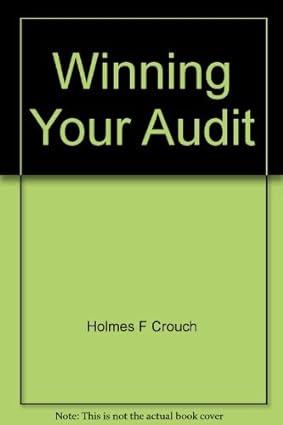Question
ABC Inc. is a public property development company with an annual reporting period of December 31, 2020. On June 15, 2020, XYZ Inc., a subsidiary
ABC Inc. is a public property development company with an annual reporting period of December 31, 2020.
On June 15, 2020, XYZ Inc., a subsidiary consolidated by ABC in accordance with FASB Accounting Standards Codification (ASC) Topic 810-10, Consolidation: Overall (ASC 810-10), filed for reorganization under Chapter 11 of the Bankruptcy Code. Although ABC retains its 75 percent ownership interest, the court controls XYZ as of the bankruptcy event. Because ABC has lost control, in the second quarter of 2020, it uses the cost method to account for its investment in XYZ upon deconsolidation in accordance with ASC 810-10 (the deconsolidation event). ABC anticipates some level of ownership or involvement in XYZ upon XYZs emergence from bankruptcy.
XYZ historically comprised ABCs operating resorts (including the hotels, underlying land, and related intangibles); it has the same fiscal year as ABC. XYZ provides casino entertainment services and owns, operates, or manages 25 resort properties (collectively, the XYZ properties). Through a related-party management services agreement, ABC Management Inc. (ABCM), an indirect subsidiary of ABC, historically provided all of XYZs operating services, including management and employees.
As a result of the deconsolidation event, ABC evaluates whether XYZs historical operations should be presented as discontinued operations for the year ending on December 31, 2020. Before the deconsolidation event, XYZ represented approximately 45 percent of the carrying value of ABCs total consolidated assets, 65 percent of total consolidated liabilities, and 55 percent of total consolidated revenue; therefore, XYZ represented a significant portion of ABCs consolidated operations.
While XYZ holds 25 properties, ABC continues to own and operate approximately 10 resort properties (collectively, the ABC properties). The ABC properties are located in the same geographic areas as the XYZ properties and have similar operating characteristics and profitability profiles. The ABC properties and XYZ properties continue to be operated with the ABC brand name and managed by ABCM during the bankruptcy.
Assume the following in evaluating this case:
XYZ represents a disposal group as defined in the ASC Master Glossary.
XYZ meets the definition of a component of an entity in the ASC Master Glossary.
The deconsolidation event represents a disposal by means other than sale in accordance with ASC 360-10-45-15. While ASC 360-10-45-15 provides the specific examples of abandonment or distribution to owners in a spin as disposals other than by sale, the deconsolidation event is analogous to abandonment in which legal title of XYZ is retained by ABC but ABC effectively loses control and significant influence over the entity because of the bankruptcy court and bankruptcy proceedings.
Required: Should ABC report XYZs operations as discontinued operations in its December 31, 2020 financial statements. Provide authoritative support for positions taken.
Step by Step Solution
There are 3 Steps involved in it
Step: 1

Get Instant Access to Expert-Tailored Solutions
See step-by-step solutions with expert insights and AI powered tools for academic success
Step: 2

Step: 3

Ace Your Homework with AI
Get the answers you need in no time with our AI-driven, step-by-step assistance
Get Started


